Featured Comment:
“I’ve made this a few times and it’s quite nice. I’ve lowered the salt a tiny bit to get it perfect for me. Tasty af and love it for breakfast!”
– Robert
What is Kakitamajiru (Japanese Egg Drop Soup)?
Kakitamajiru is a Japanese-style egg drop soup with a light, clear dashi broth. It’s quite subtle, yet packed with umami, and the thin yet fluffy egg ribbons are perfectly distributed throughout the soup.
Kakitamajiru (かきたま汁) is made up of three words. “Kaki” (掻き) means “to stir”, tama comes from “tamago” (卵) which means egg, and shiru or jiru (汁) is the Japanese word for soup. When we put them together we get “kakitamajiru” which means “stirred egg soup”.
Soup is an important element of a Japanese meal. It’s not considered a starter, but instead usually served alongside rice, a main dish of meat or fish, and then side dishes of vegetables, salads, and pickles. You can enjoy kakitamajiru with any meal that would usually be served with miso soup. It also makes a great breakfast soup!
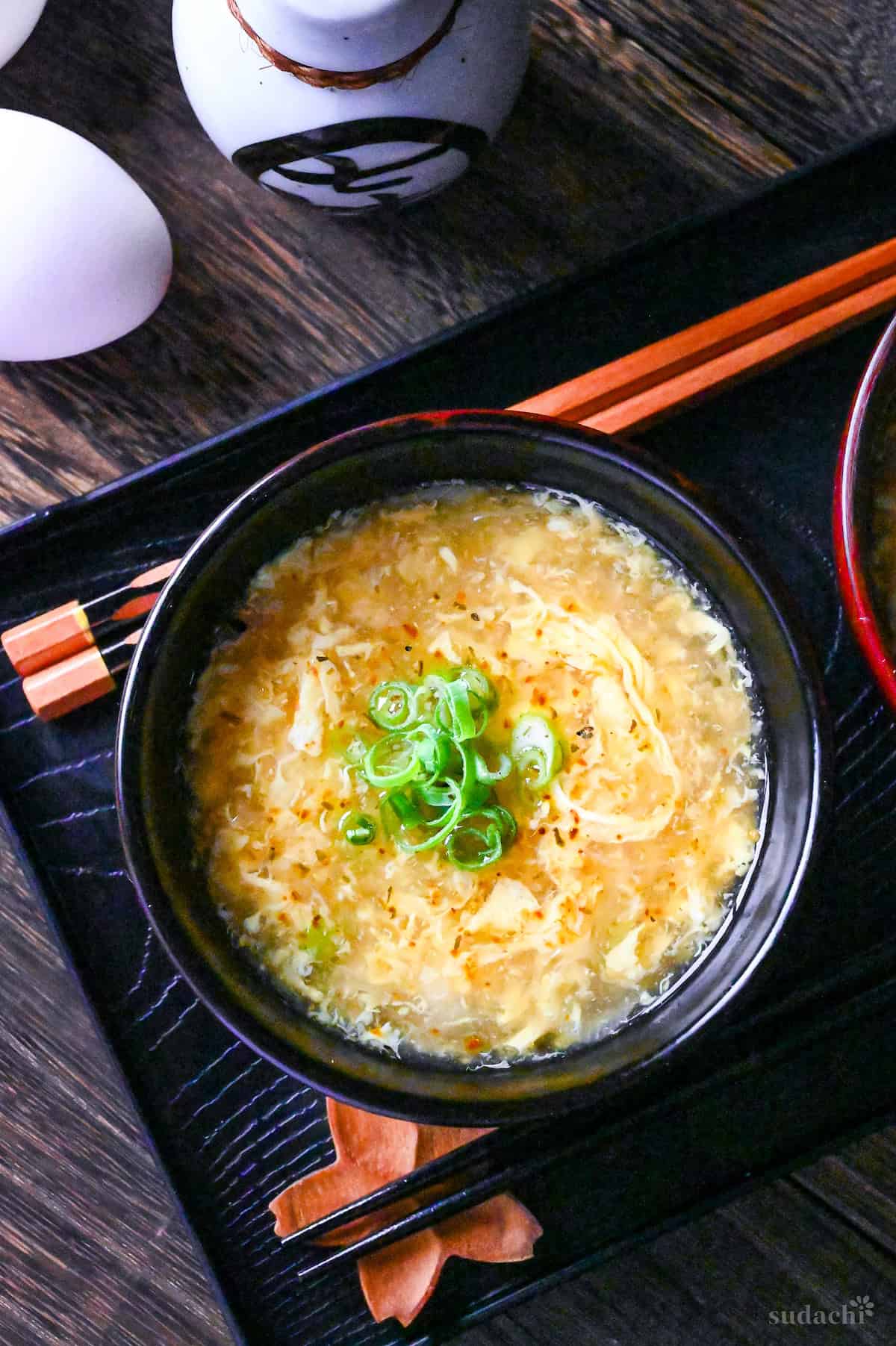
Kakitamajiru VS Chinese Egg Drop Soup
Egg drop soup is not a dish that originated in Japan; it is a soup that has evolved uniquely in different countries in the world. Soups using similar techniques exist in Europe as well as Asia.
Despite this, Chinese egg drop soup is often compared to kakitamajiru. However, there are key differences between Chinese egg drop soup and Japanese kakitamajiru.
| Japanese Kakitamajiru | Chinese Egg Drop Soup | |
|---|---|---|
| Base | Dashi broth | Chicken stock |
| Thickening agent | Thickened with potato starch or kudzu starch | Thickened with corn starch |
| Consistency | Relatively thin | Thick |
| Seasoning | Seasoned with soy sauce | Seasoned with white pepper |
Japanese egg drop soup is made with dashi and dashi doesn’t contain salt. This is why it needs the saltiness from the soy sauce to bring out the flavors. On the other hand, Chinese egg drop soup generally uses salty chicken stock; therefore, adding pepper is more common in the Chinese variety.
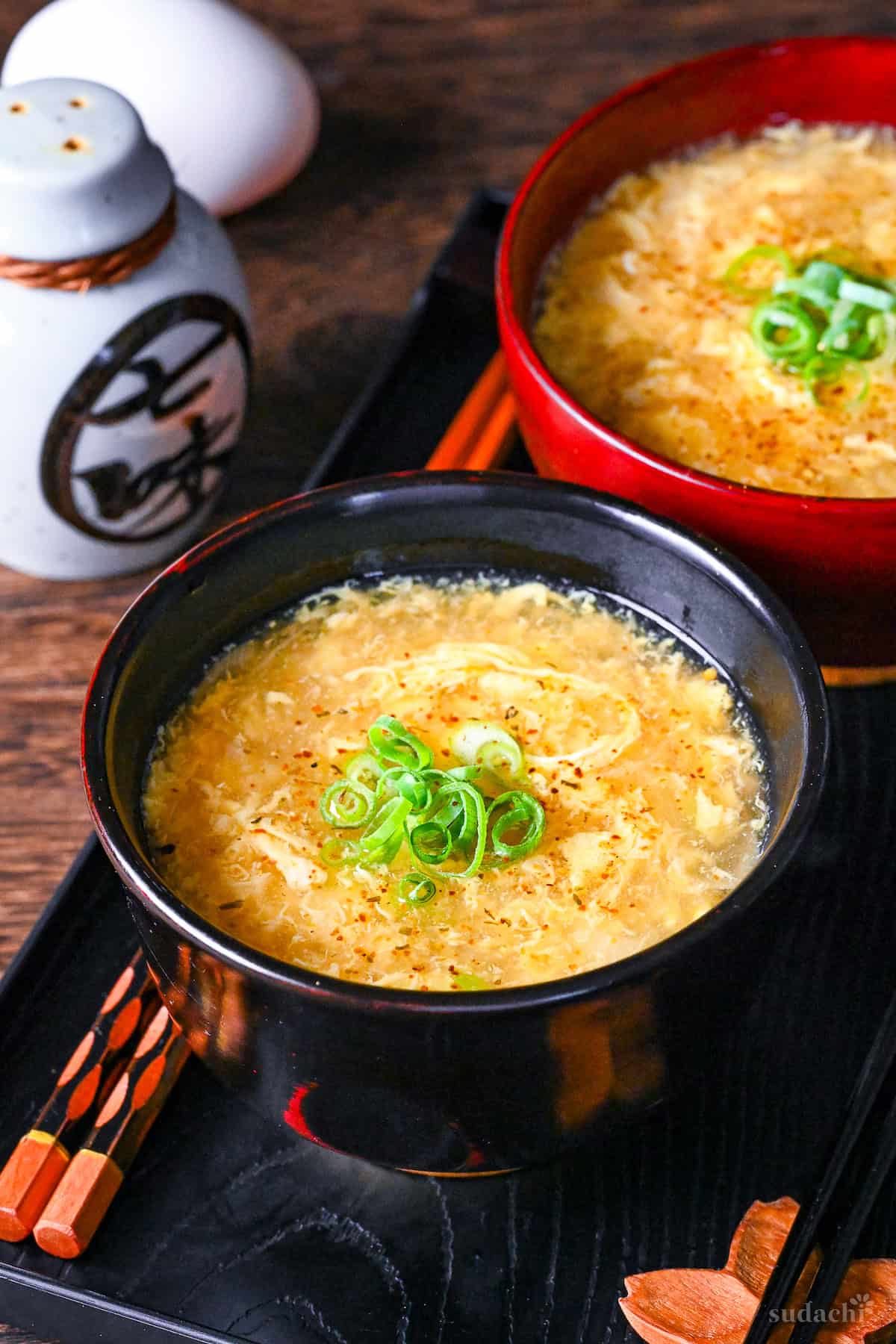
Visual Walkthrough & Tips
Here are my step-by-step instructions for how to make easy and delicious Kakitamajiru. For ingredient quantities and simplified instructions, scroll down for the Printable Recipe Card below.
If you prefer to watch the process in action, check out my YouTube video of this recipe for a complete visual walkthrough!
Pour dashi into a saucepan, and add soy sauce and salt. Place the pan on the stove and bring to a boil over medium heat. I recommend doing a taste test once it’s warmed to check that it’s seasoned to your liking.
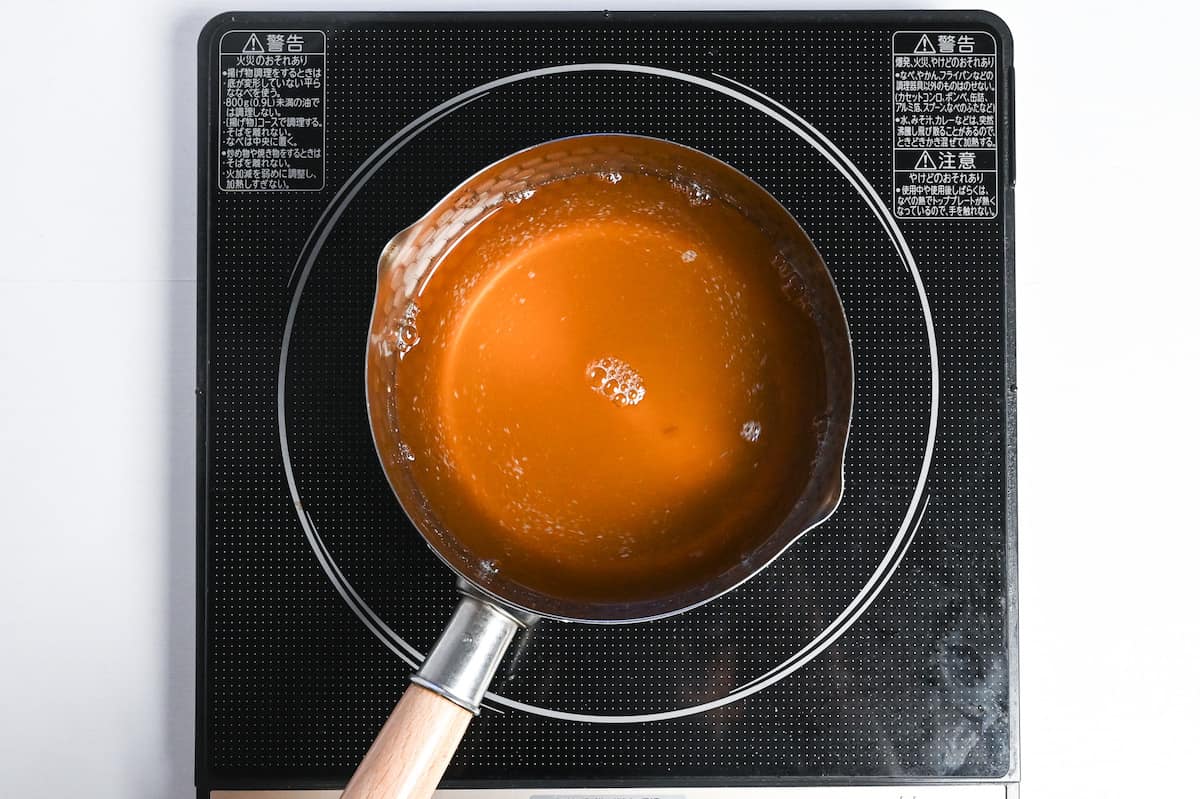
One of the most important elements of kakitamajiru is a good dashi. Dashi is very simple to make; it only requires a few ingredients and little effort. It also brings the flavor up a level! If you don’t have the time or ingredients, my dashi bags are the next best thing, great flavor with no fuss! Learn more about dashi bags and my recommended brands here.
It’s an optional ingredient but I love the texture and flavor added by using Japanese leeks. Cut the white part into thin diagonal slices, this style of cutting is called “naname-giri” and is typically used for soups and hot pots. If you want to learn more about cutting green onion for Japanese cooking, check out my post “what is negi?”.
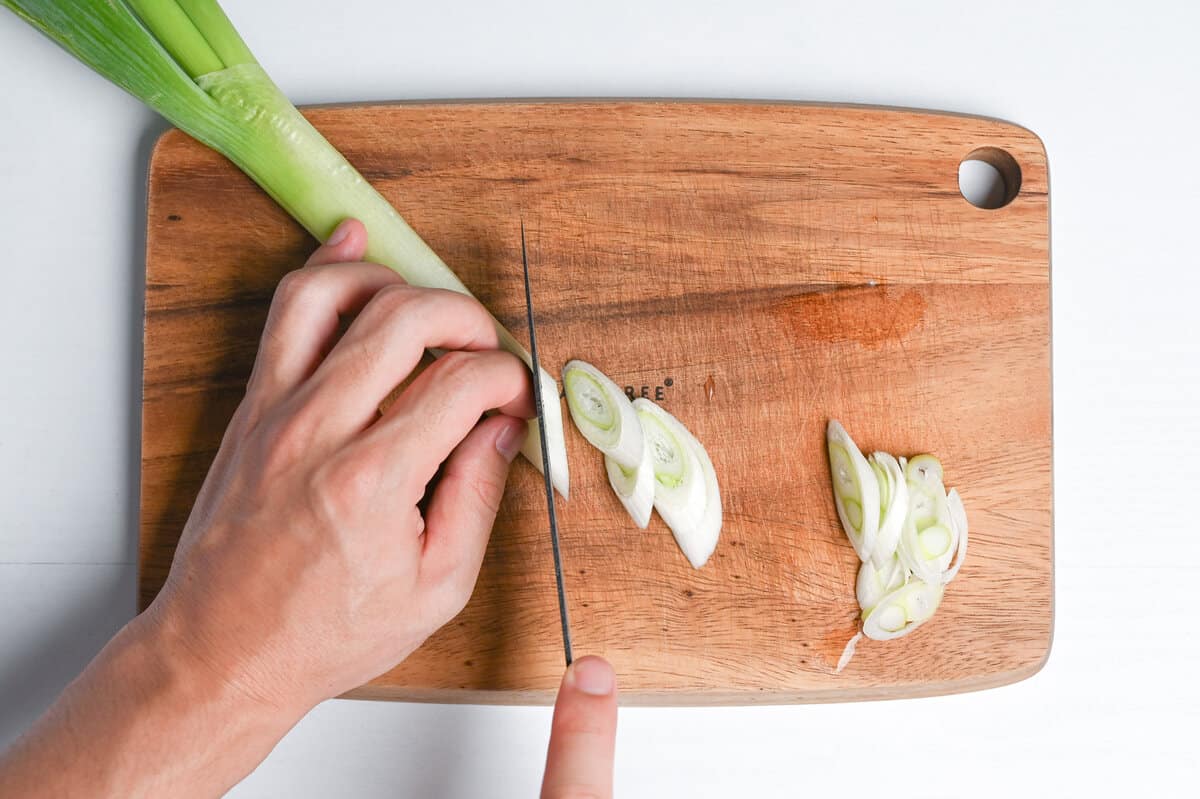
Once your dashi starts to boil, add the leek and lower the heat to a simmer.
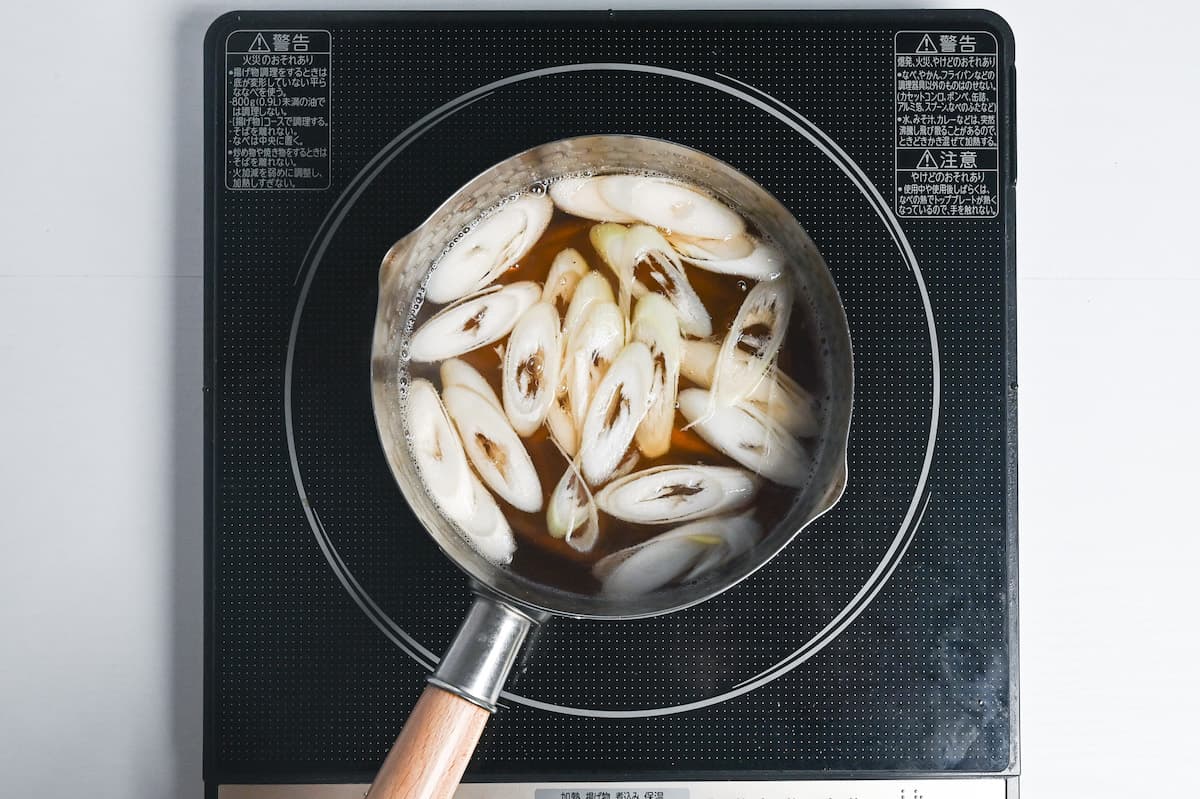
Mix potato starch and cold water in a small bowl to make a slurry.
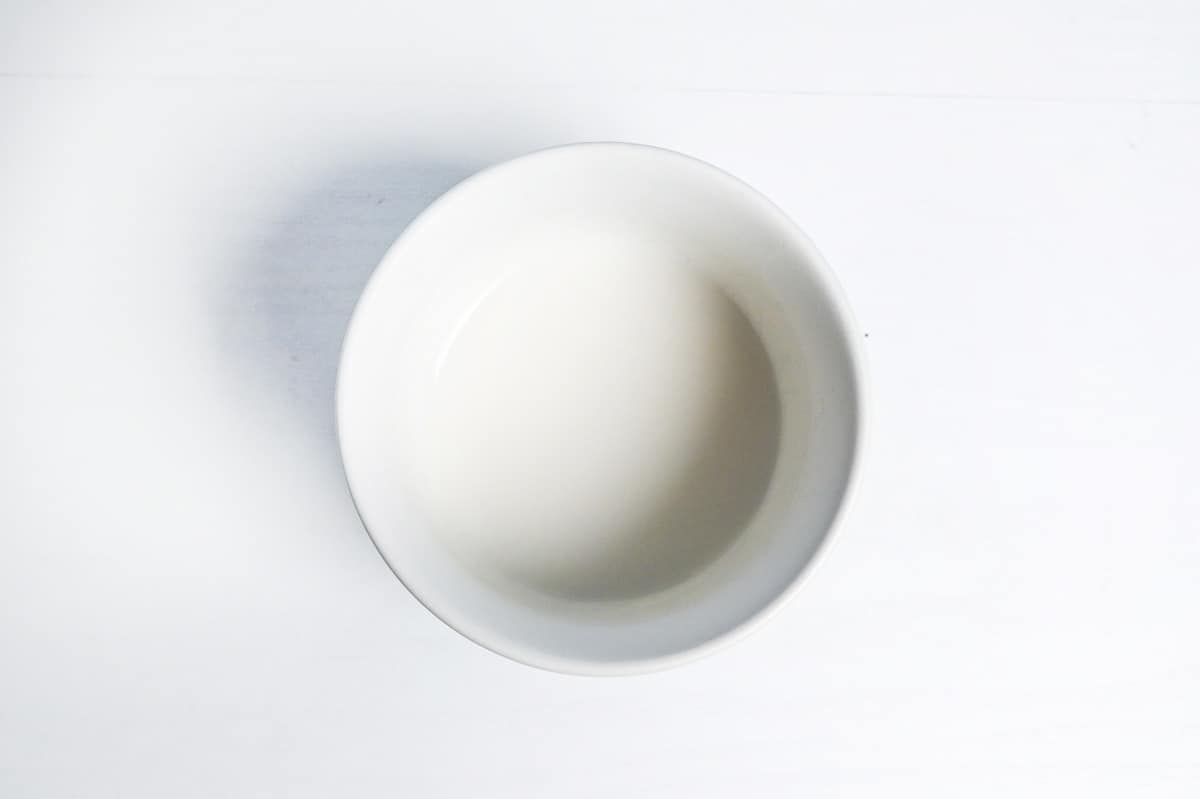
The slurry is used to thicken the soup, which helps the egg ribbons float in the soup rather than sink to the bottom.
We make a slurry with cold water because adding the potato starch directly into the hot dashi will clump together and leave lumps of starch in your broth.
The starch tends to sink to the bottom of the slurry or harden when left to stand, so make sure to mix it right before adding it to the broth.
Drizzle the slurry into the broth and mix thoroughly. It should thicken slowly over the low heat.
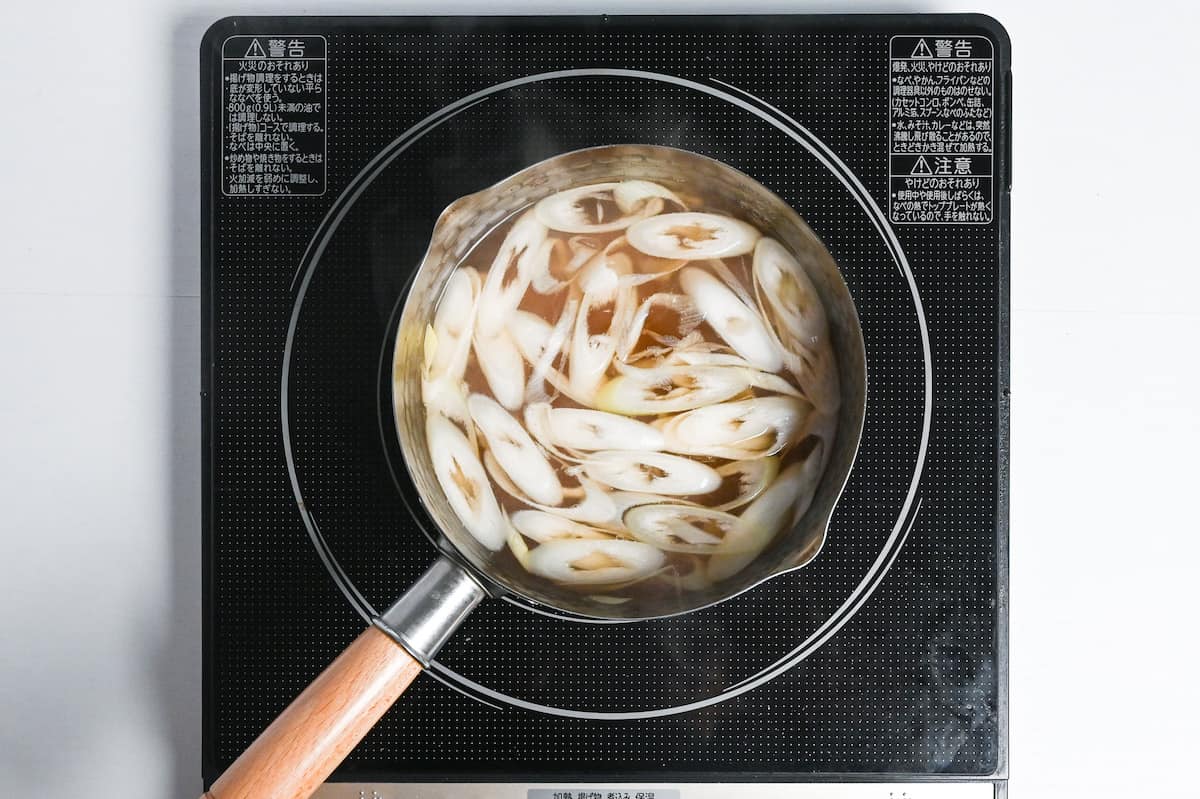
Crack the eggs into a pourable container and whisk thoroughly until the whites and yolks are combined.
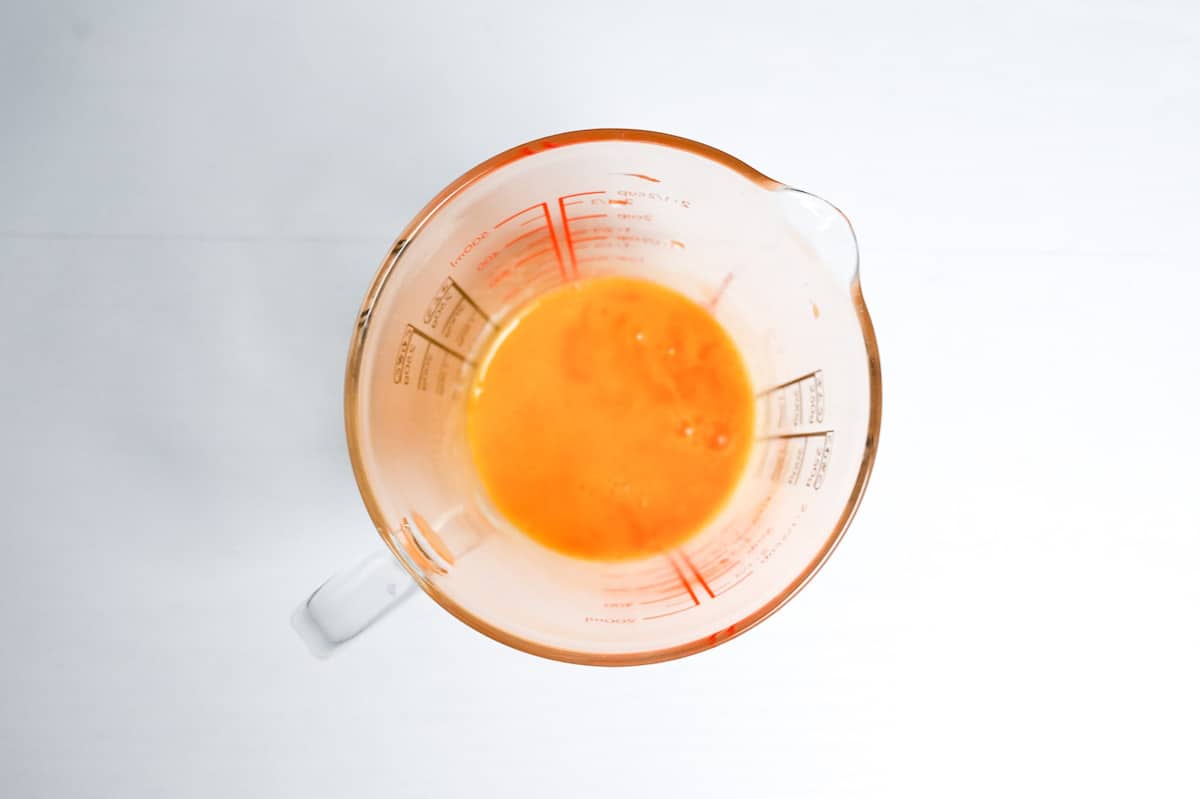
Increase the heat to medium and allow the broth to boil once more. Pour the egg slowly into the soup, one-third at a time. This will ensure thin ribbons rather than thick clumps. Each time you add the egg, the temperature of the soup will drop, so wait for it to start bubbling again before you add the next third.
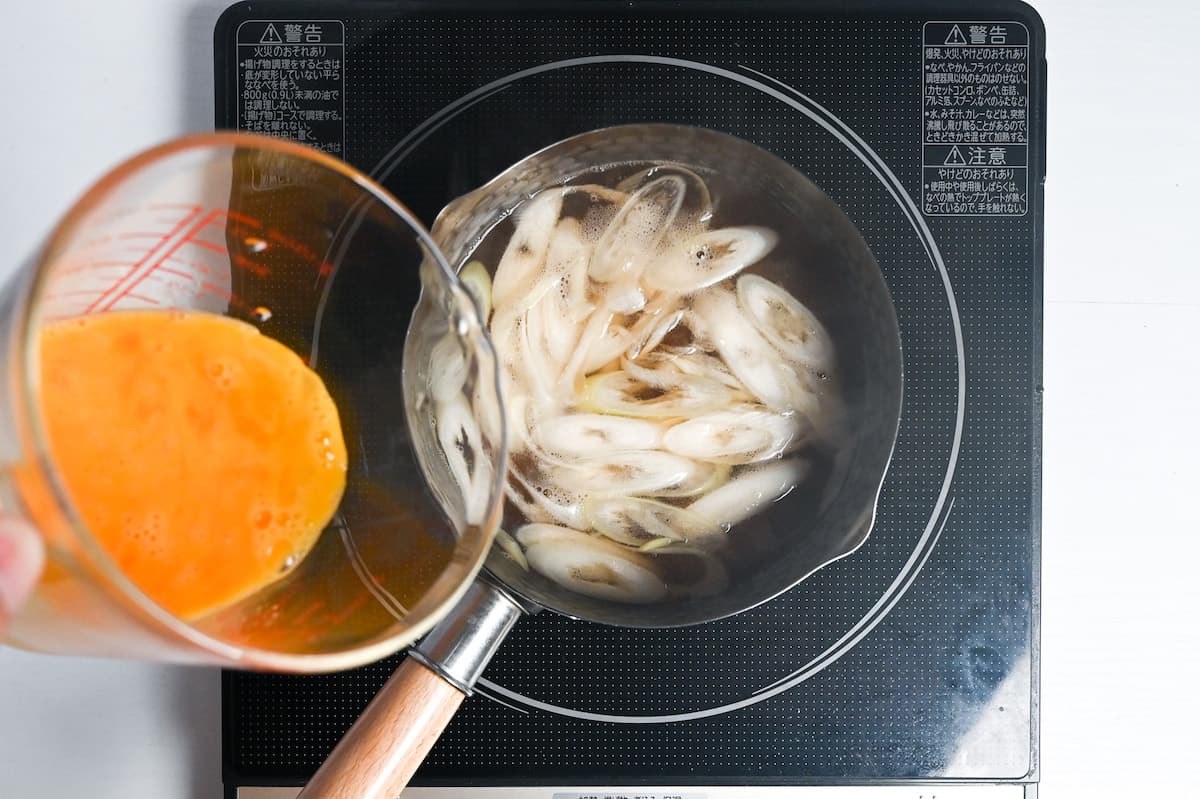
Gently mix the soup and then remove it from the heat.
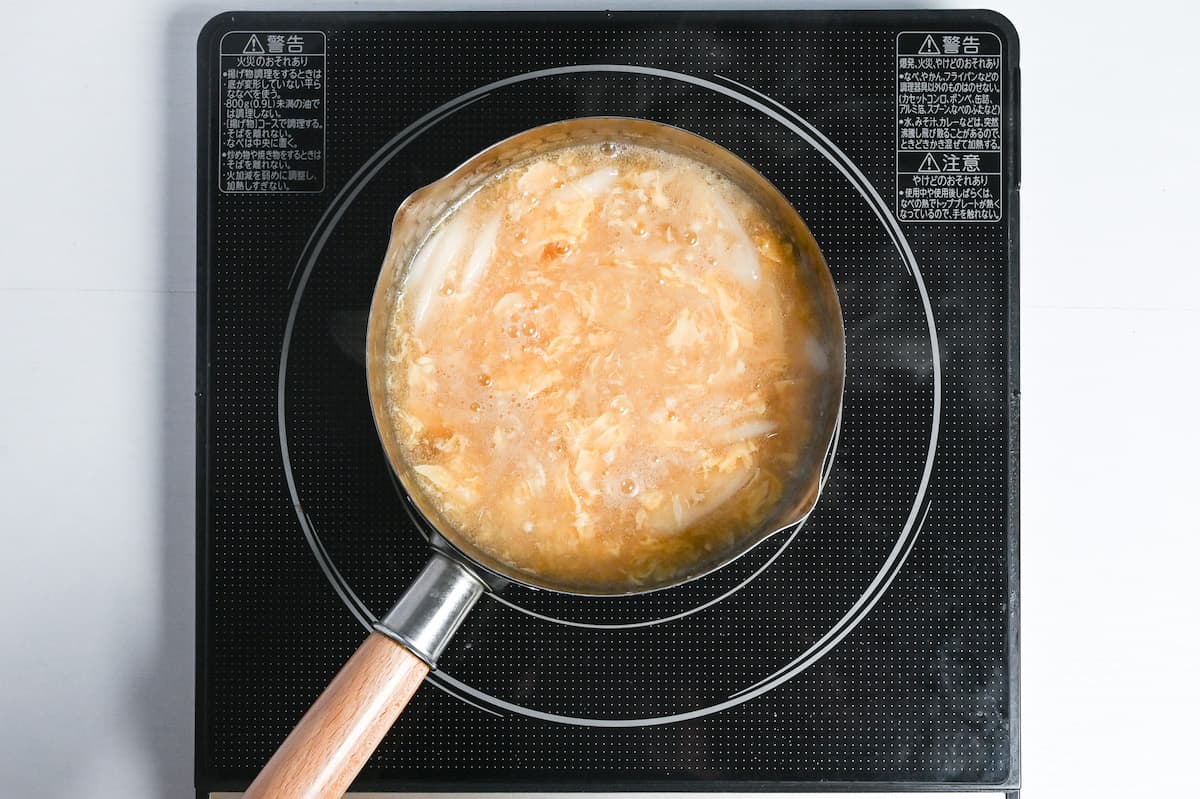
Divide into serving bowls and top with chopped green onion and Japanese chili powder (shichimi togarashi).
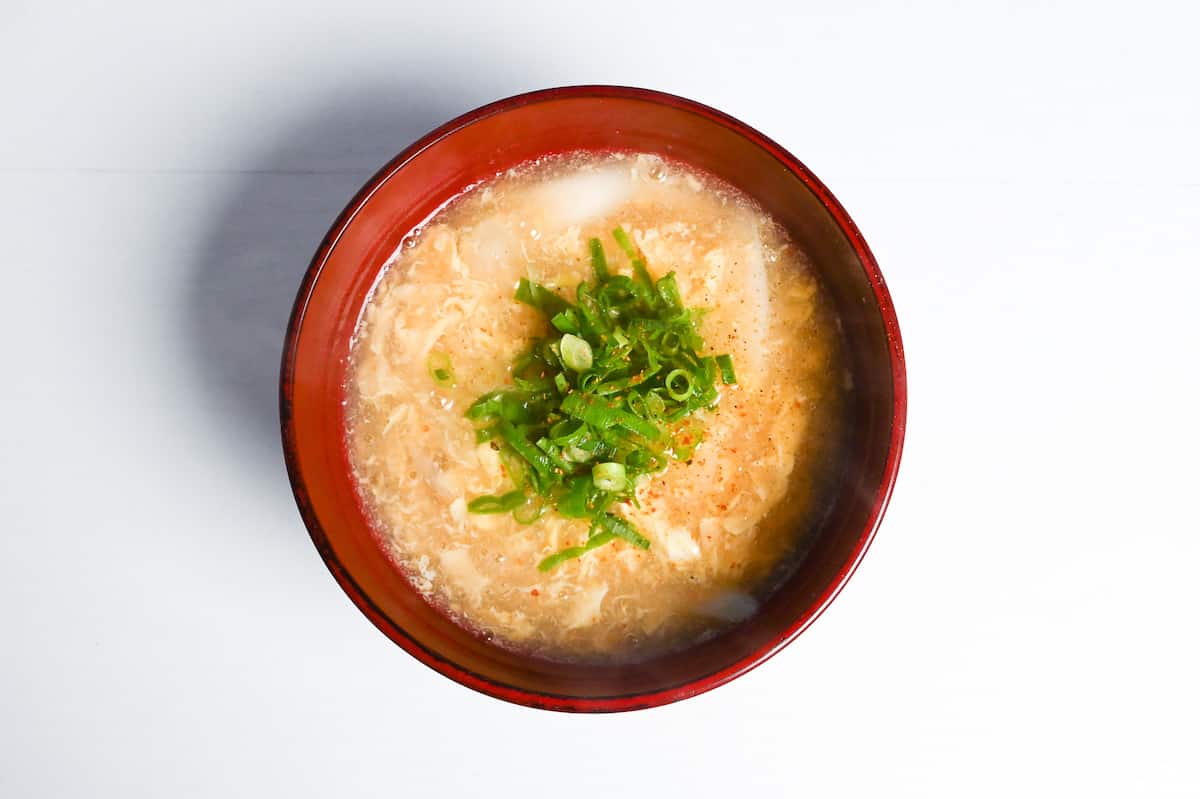
Enjoy!
Jump to Full Recipe MeasurementsHow to Store
Let the soup cool until it’s cool enough to touch before storing. This soup can be refrigerated in a sealed container for 1-2 days.
Freezing is not recommended.
You can reheat it in a saucepan on the stove, or microwave in a pinch.
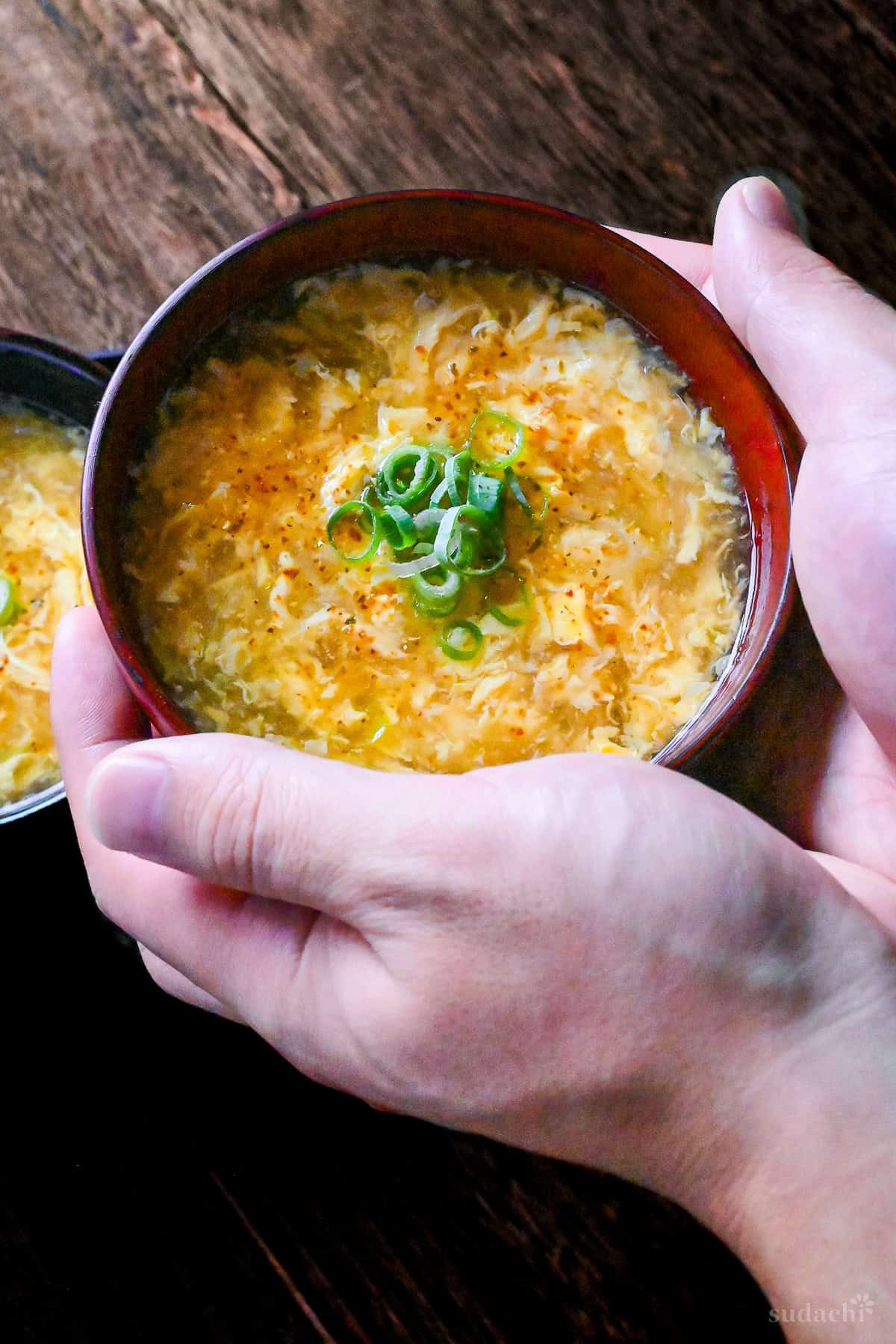
I hope you enjoy this Kakitamajiru recipe! If you try it out, I’d really appreciate it if you could spare a moment to let me know what you thought by giving a review and star rating in the comments below. It’s also helpful to share any adjustments you made to the recipe with our other readers. Thank you!
More Japanese Soup Recipes
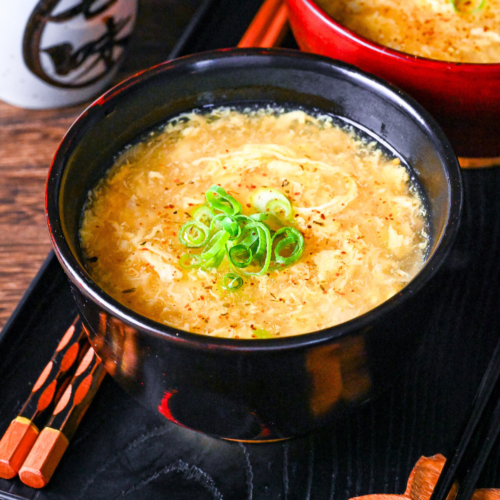
Japanese Egg Drop Soup (Kakitamajiru)
Ingredients
- 500 ml dashi stock use plant-based dashi for vegetarians
- 1 tsp Japanese soy sauce (koikuchi shoyu)
- 1 tsp salt
- 30 g Japanese leek (naganegi) white part, diagonally sliced
- 1 tbsp water
- 1 tbsp potato starch (katakuriko) or cornstarch/tapioca starch
- 2 eggs
- finely chopped green onions to garnish
- Japanese chili powder (shichimi togarashi) shichimi togarashi, optional garnish
My recommended brands of ingredients and seasonings can be found in my Japanese pantry guide.
Can’t find certain Japanese ingredients? See my substitution guide here.
Instructions
- Pour 500 ml dashi stock into a saucepan and mix in 1 tsp Japanese soy sauce (koikuchi shoyu) and 1 tsp salt. Place the saucepan on the stove and bring to a boil over a medium heat. (Taste test the broth at this point and add more soy sauce if necessary.)

- Once it starts to boil, add 30 g Japanese leek (naganegi) and reduce the heat to simmer.

- In a small bowl, mix 1 tbsp potato starch (katakuriko) with 1 tbsp water to make a slurry.

- Drizzle the slurry into the broth and mix thoroughly.

- Crack 2 eggs into a pourable container and whisk until combined.

- Increase the heat and return the broth to a boil. Once boiling, drizzle in the whisked egg one-third at a time. The egg will lower the temperature of the broth so wait for it to start bubbling again before adding the next third.

- Gently mix the soup a few times and then remove it from the heat.

- Pour into serving bowls and sprinkle with finely chopped green onions and Japanese chili powder (shichimi togarashi).

- Enjoy!
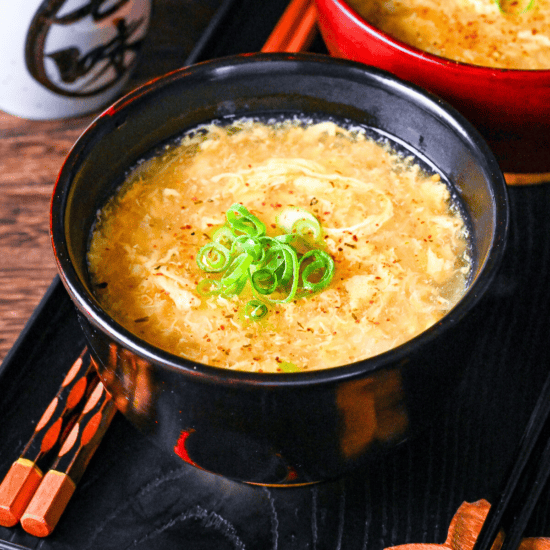




I’ve made this a few times and it’s quite nice. I’ve lowered the salt a tiny bit to get it perfect for me. Tasty af land loce it for breakfast!
Hi Robert, thank you so much for the feedback and rating! Glad you enjoyed the recipe 🙂
I appreciate the explanation of how Japanese and Chinese egg drop soups differ!
Hi Jan,
Thank you so much for your comment! I’m glad you enjoyed the content! 🙂
Yuto